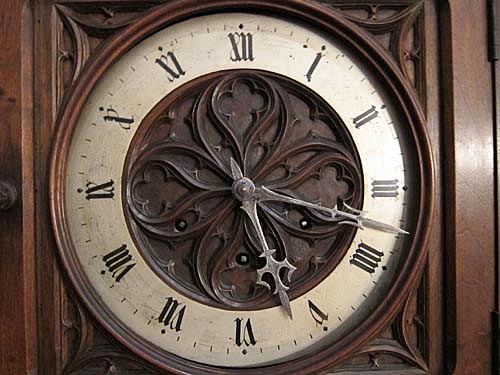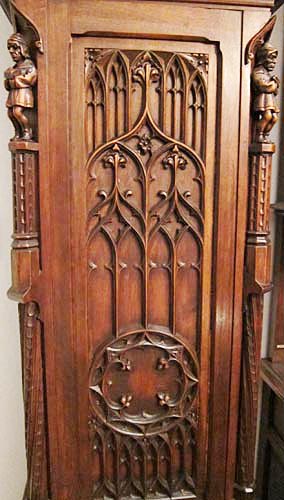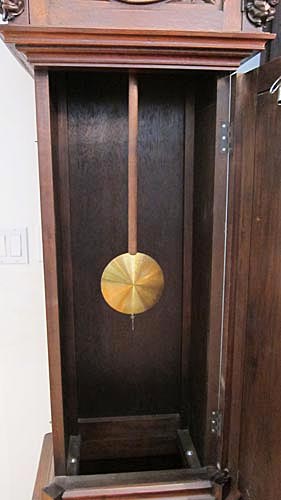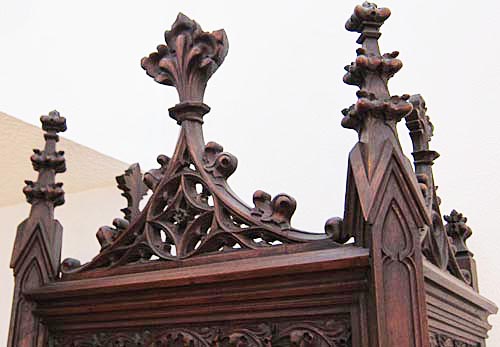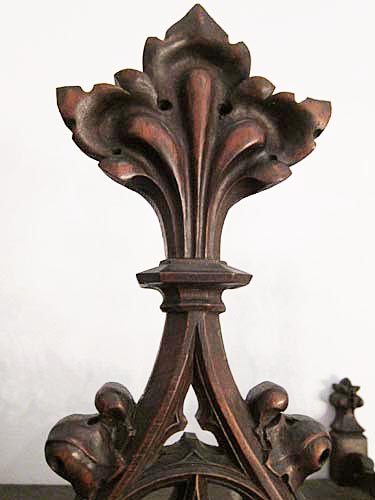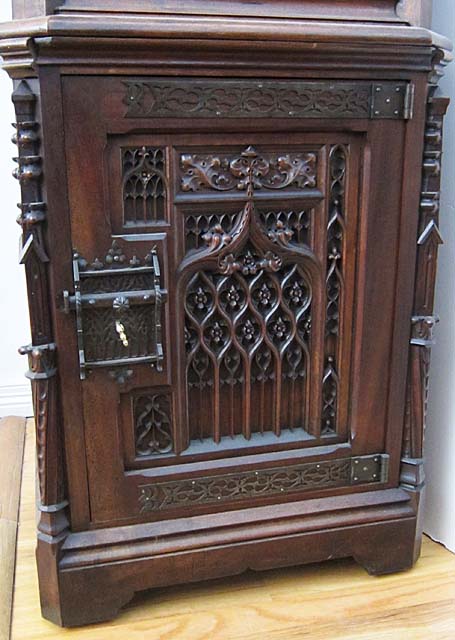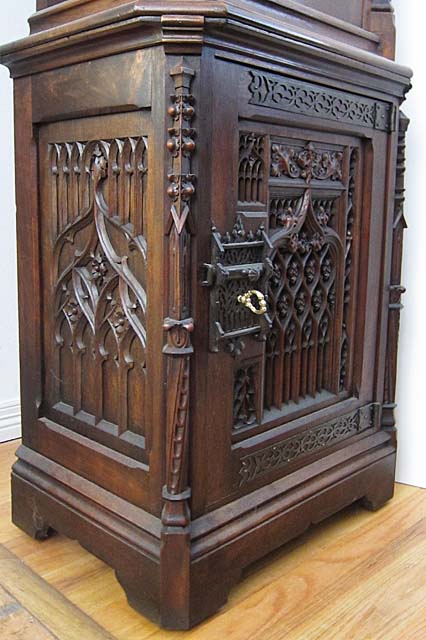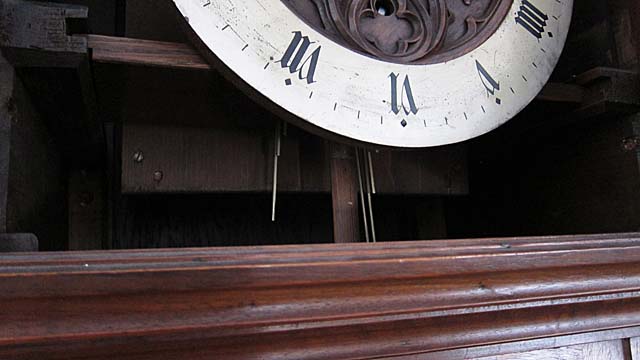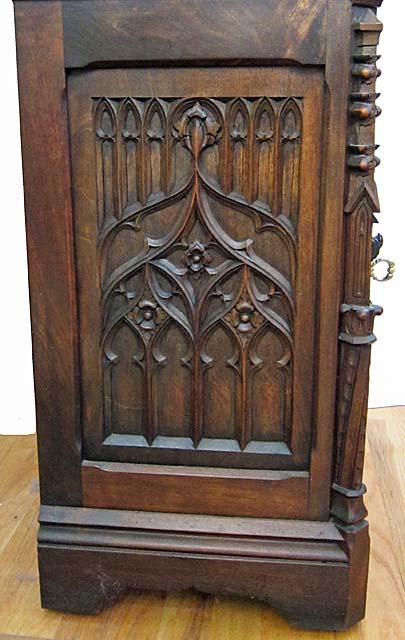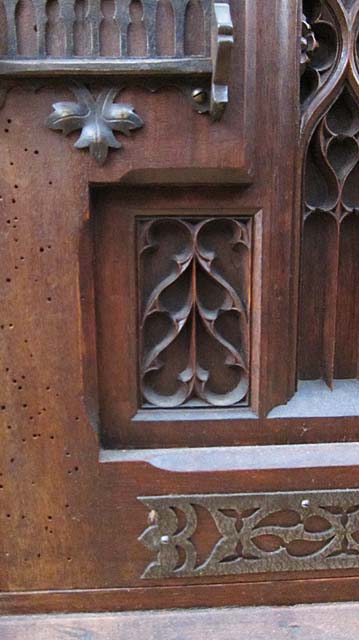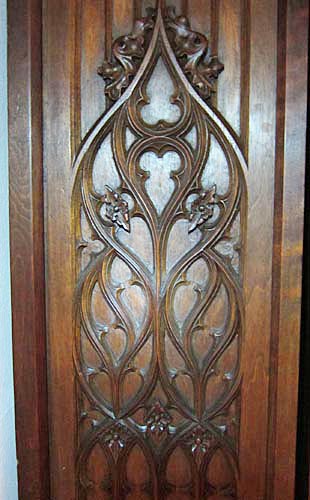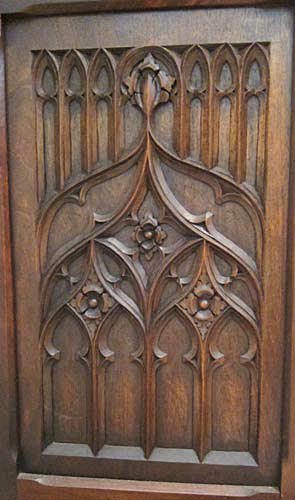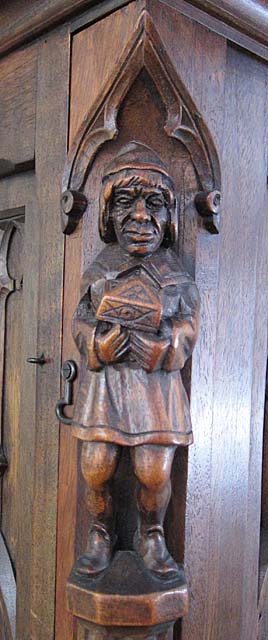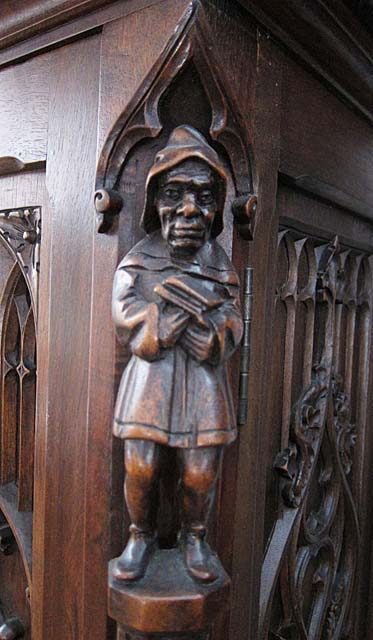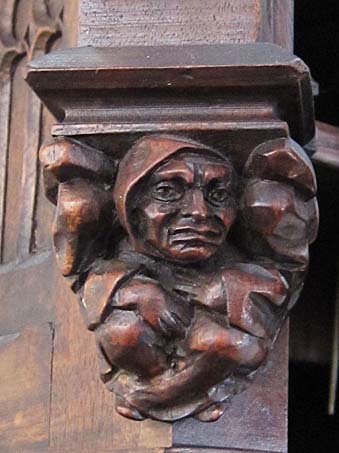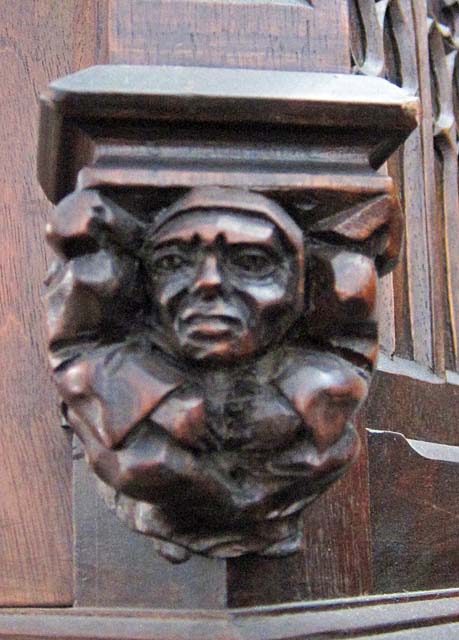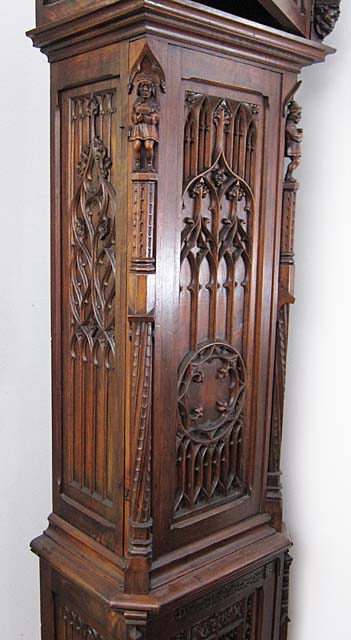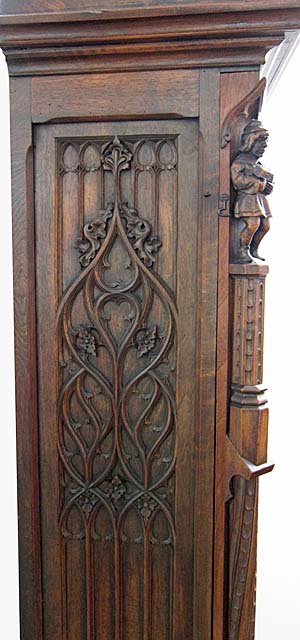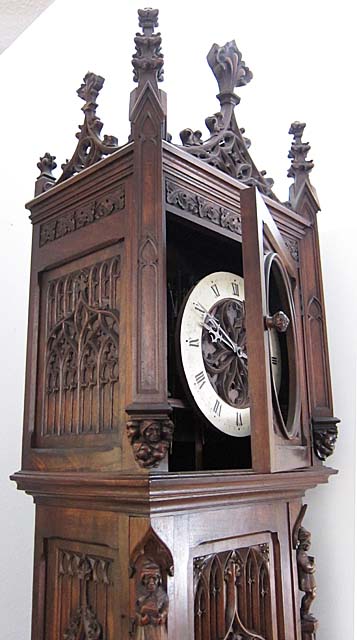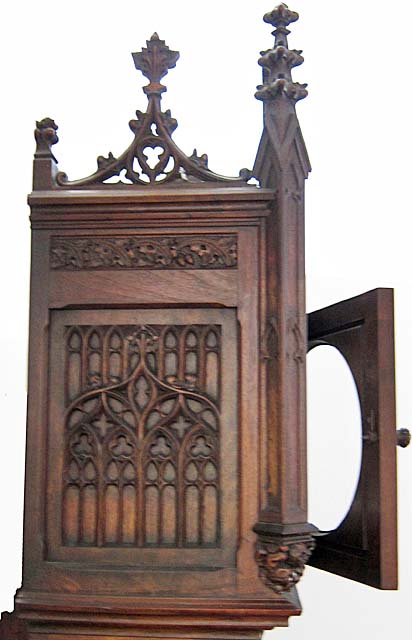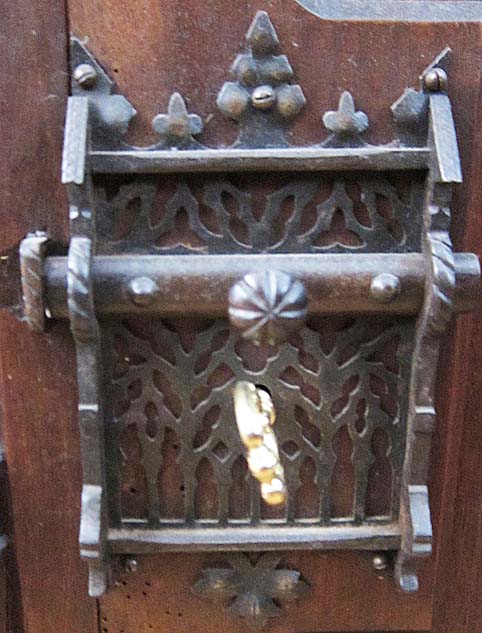
This clock evokes all the drama and beauty of a Gothic bell tower, reminding us of Notre Dame de Paris. And it even works, chiming the quarter hours and intoning the hours in a variation of the Westminster chimes (that really originated in the bastion of Gothic architecture, Cambridge, England!).
In all our years in the antiques business, this is only one of two Gothic long case clocks we have ever offered. This one had been on an estate near Fontainebleau, marking the passage of time for more than a century for generations of inhabitants. Kids running late for school, parents enjoying a peaceful evening together after tucking in their offspring, birthdays, christenings, weddings, and funerals - such a clock would have been a witness to all of these and more.
It is fascinating to consider how a long case clock, what we Americans might call a grandfather clock, came to be such an important part of the furnishings of a 19th century home. With our wristwatches, digital alarm clocks, time-displays on cell phones, we are seldom far from knowing exactly what time it is. In an earlier era, only the nobility had quality timepieces in the form of pocket watches or mantle clocks and the rest of society was dependent on the local church's bells to know when it was time for mass or to bring the cows home for milking. Bell towers were an essential part of the landscape in areas such as Flanders where belfries are still visible from town to town and were memorialized in the paintings of van Eyck and van der Weyden. In addition to keeping time, their height was essential for surveying the countryside and seeing if an opposing army might be approaching.
This clock is a triumph of the cabinet-maker's artistry incorporating the architectural elements of Gothic bell towers and church steeples. Its design is based on a perfect square, stretching upward to a central toupie with towers and crocketed finials at the front corners.
What first attracted us to this clock were the intricately carved figures, one on each side, at eye level. Contained within niches reminiscent of the portals of Chartres or Notre Dame, these figures are not, however, the saints we would find at Gothic cathedrals. Less refined and more down-to-earth, the one on the right wears a hooded, knee-length robe and holds a book, while the one on the left is similarly garbed but appears to be clutching a box.
Above the figures, and emerging from corbels that seem to imprison them, are the upper bodies of two figures that are also hooded. Perhaps all four are meant to symbolize the workers who dwelled atop bell towers and had the responsibility to ring the bells and maintain the mechanisms? It is impossible to know, but they lend a touch of realism and act as a contrast to the delicate tracery or fenestrage that decorates the three visible sides of the case.
The door to the central cabinet housing the clockworks is magnificently carved. Eight lancet arches support a circle, divided into eight lobes, and suggestive of the circular clock face at the top. Above the circle is a broad ogive arch crowned with the extended flame motif that lent its name to the "flamboyant" style of Gothic architecture and furniture. Intricately carved and ingeniously subdivided lancet arches provide the overall design, with those forming the top of the door echoing those at its base.
On either side of the door are pilasters, the lower parts of which are twisted and decorated in a diagonal style reminiscent of the pillars inside Gothic cathedrals. Atop the columns are the pedestals on which the figures stand on their own columns, under carved canopies.
The door on the lowest part of the case is even more exuberant in its evocation of the flamboyant Gothic style. The broad, central ogive arch is encased in a rectangular frame, above which the "flame" at the top extends to right and left with oak leaves (a motif repeated in the frieze just below the top of the cabinet). The ogive arch is subdivided into lancet arches at the base, above which elongated lobes are filled with intricately carved blossoms. The elaborate lock is on the left side with tiny panels evoking, in miniature, the larger designs found on the doors.
That the sides of the clock are also intricately carved, using an overall tracery design, emphasizes that this clock must have been a commission from a wealthy devotee of Gothic design. Otherwise a shortcut, such as plis-de-serviette panels, would have been used on parts of the clock which would have been less likely to be viewed.
Perhaps most compelling of all the aspects of this clock is that the time-keeping and chiming work perfectly. The mechanism, from F de S Paris Derose, has been scrupulously maintained over the centuries, as well as getting a clean bill of health from a leading specialist in antique clocks since its arrival in Texas. The keys for winding the clock are intact. It is a simpler mechanism than that of U.S. grandfather clocks - no complicated chains and counterweights to keep this clock going and on time.
The inner circle of the clock face is itself a triumph of Gothicdecoration. Its design is divided into four tear-drop shaped lobes of tracery, each of which is further segmented into mouchettes, with the winding mechanism secreted into the lower lobes (at four, six, and eight o'clock on the dial). The hands are of metal, each with a different spear-like motif at the end.
The most representative color, given the challenges of photographing dark furniture, is in the image at the top of this page.
Reference
Ader-Tajan, Collection Bruno Perrier Haute Epoque (Catalog for Sale at Auction on April 6, 1992 at the Hôtel Drouot, Paris); Boccador, Jacqueline, Le Mobilier Français du Moyen Age à la Renaissance (Editions d'Art Monelle Hayot, Saint-Just-en-Chaussée, 1988); Thirion, Jacques, Le Mobilier du Moyen Age et de la Renaissance en France (Editions Faton, Dijon, 1998); Viollet-le-Duc, Eugène, Le Mobilier Médiéval (Georges Bernage, editor) (Editions Heimdal, 2003).
Uses
This clock is the center of attention, both for the eyes and thears, no matter where it stands.
